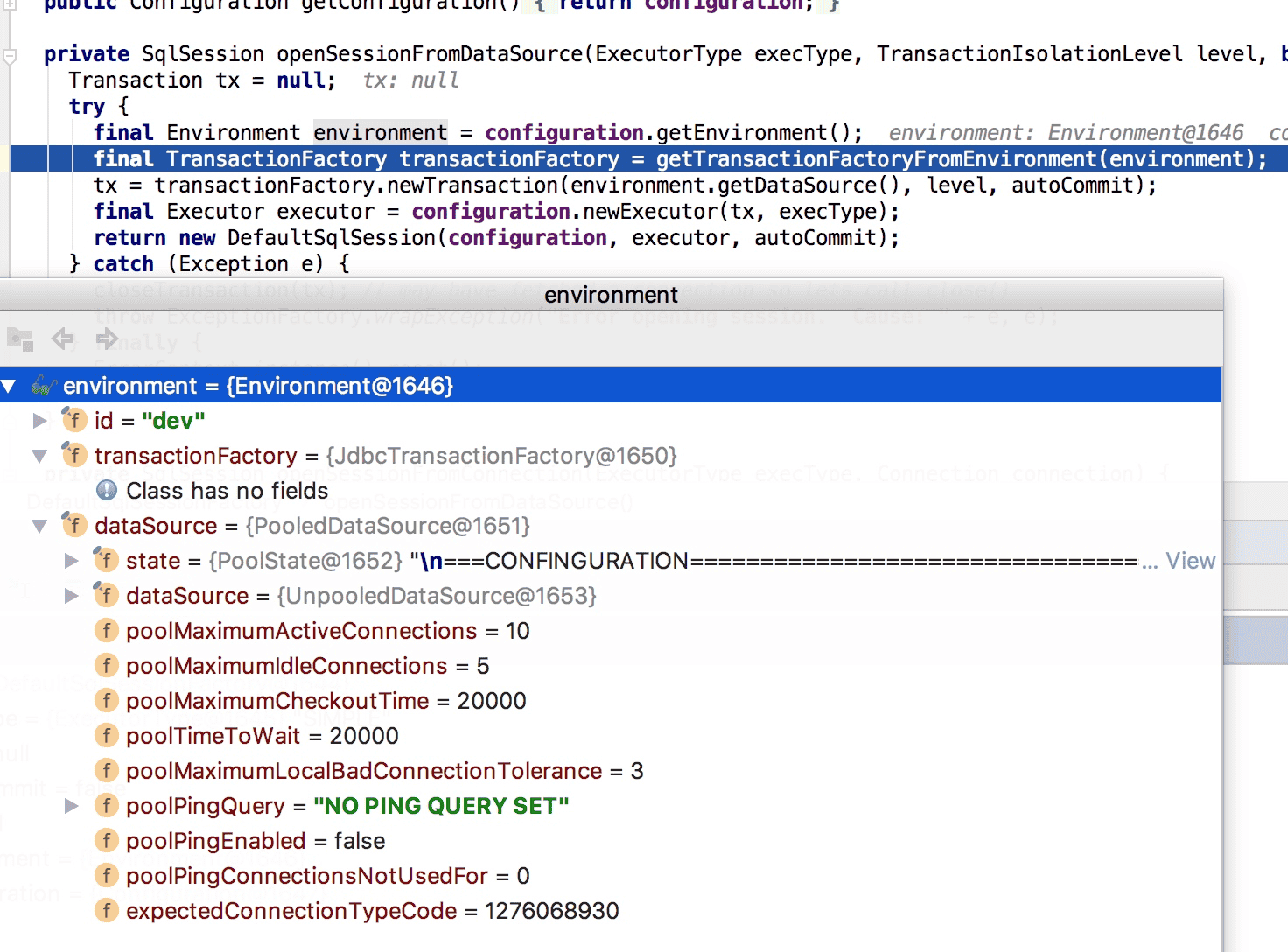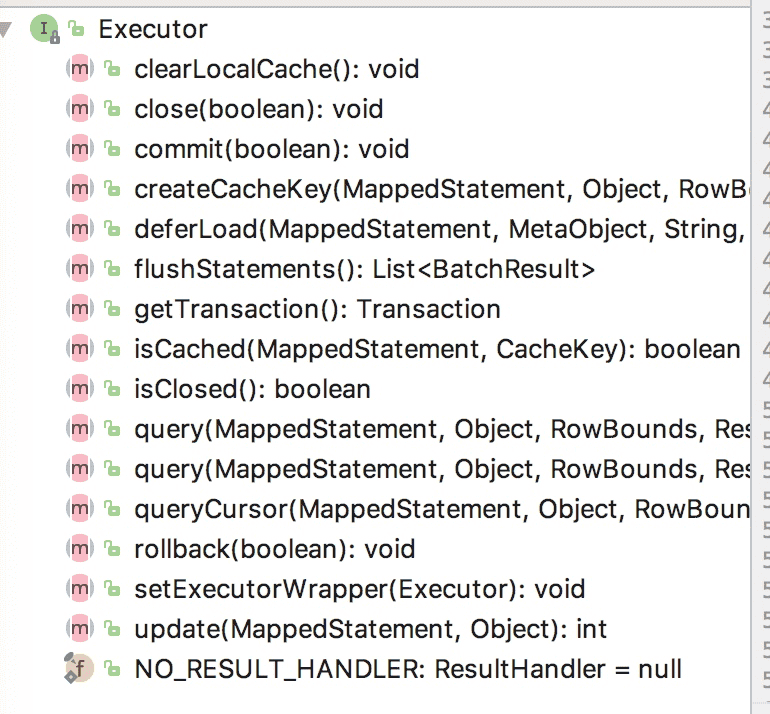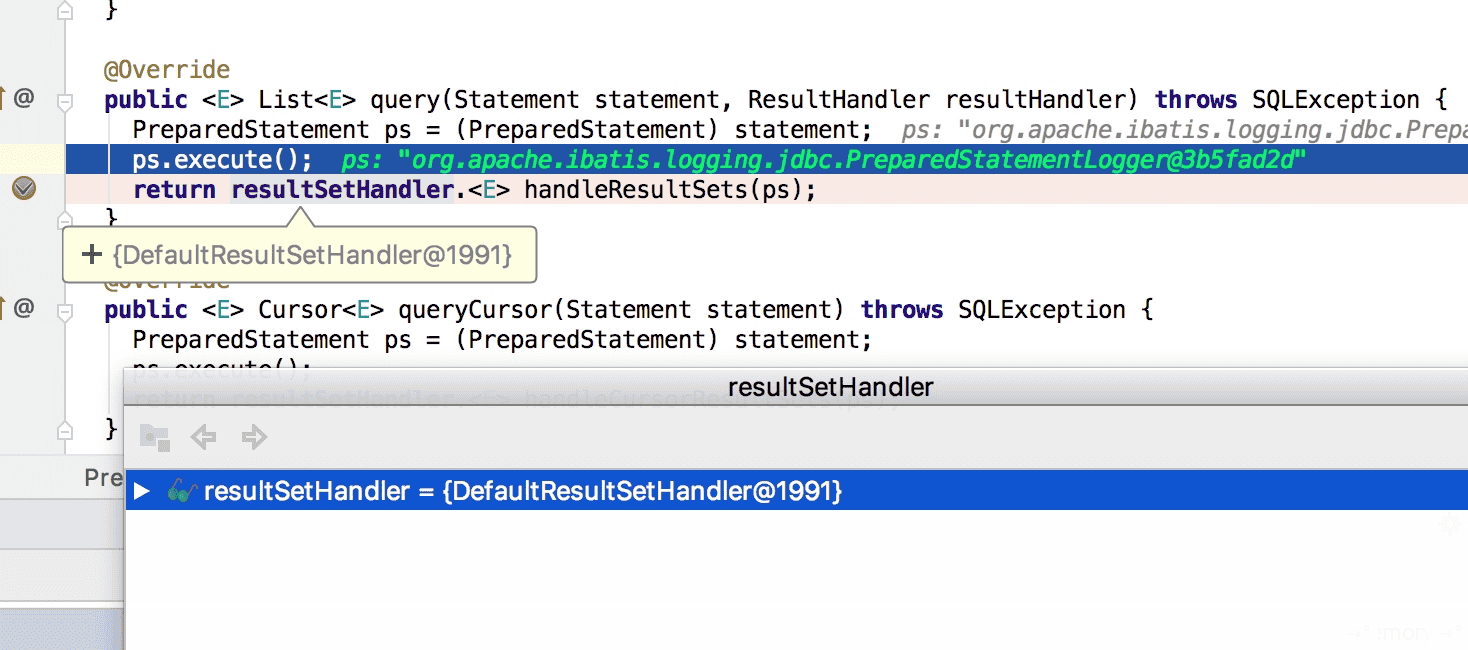分类
商品
- 商品
- 店铺
- 资讯
SSM是目前常见的构建Web项目的方案,Mybatis是其中重要的一环,假如能深刻的了解Mybatis的内部原理,对我们会有极大的帮助,接下来一起看看Mybatis的内部设计。
搭建Mybatis的基本运行环境,参考Mybatis入门
贴上自己的代码
public static void main(String[] args) { SqlSession sqlSession = null; try { InputStream inputStream = Resources.getResourceAsStream("mybatis.xml"); SqlSessionFactory sqlSessionFactory = new SqlSessionFactoryBuilder().build(inputStream); // 查询数据库内容 sqlSession = sqlSessionFactory.openSession(); User user = sqlSession.selectOne("me.aihe.dao.UserMapper.selectUser",1); System.out.println(user); // 插入数据库内容 } catch (IOException e) { e.printStackTrace(); }finally { if (sqlSession != null) { sqlSession.close(); } } }Resources.getResourceAsStream("mybatis.xml"); public SqlSessionFactory build(InputStream inputStream, String environment, Properties properties) { try { XMLConfigBuilder parser = new XMLConfigBuilder(inputStream, environment, properties); return build(parser.parse()); } catch (Exception e) { throw ExceptionFactory.wrapException("Error building SqlSession.", e); } finally { ErrorContext.instance().reset(); try { inputStream.close(); } catch (IOException e) { // Intentionally ignore. Prefer previous error. } } } public SqlSessionFactory build(Configuration config) { return new DefaultSqlSessionFactory(config); } image.png
image.png image.png
image.png @Override public SqlSession openSession() { return openSessionFromDataSource(configuration.getDefaultExecutorType(), null, false); } private SqlSession openSessionFromDataSource(ExecutorType execType, TransactionIsolationLevel level, boolean autoCommit) { Transaction tx = null; try { // 获取配置的 final Environment environment = configuration.getEnvironment(); final TransactionFactory transactionFactory = getTransactionFactoryFromEnvironment(environment); tx = transactionFactory.newTransaction(environment.getDataSource(), level, autoCommit); final Executor executor = configuration.newExecutor(tx, execType); return new DefaultSqlSession(configuration, executor, autoCommit); } catch (Exception e) { closeTransaction(tx); // may have fetched a connection so lets call close() throw ExceptionFactory.wrapException("Error opening session. Cause: " + e, e); } finally { ErrorContext.instance().reset(); } }sqlSession.selectOne("me.aihe.dao.UserMapper.selectUser",1);selectOne内部调用的是selectList的函数,selectList函数内部,首先获取到key对应的MappedStatement,而后通过Executor查询MapperStatement。
在解析配置的时候建立key与MappedStatement映射关系的
@Override public <E> List<E> selectList(String statement, Object parameter, RowBounds rowBounds) { try { MappedStatement ms = configuration.getMappedStatement(statement); return executor.query(ms, wrapCollection(parameter), rowBounds, Executor.NO_RESULT_HANDLER); } catch (Exception e) { throw ExceptionFactory.wrapException("Error querying database. Cause: " + e, e); } finally { ErrorContext.instance().reset(); } } @Override public <E> List<E> query(MappedStatement ms, Object parameter, RowBounds rowBounds, ResultHandler resultHandler) throws SQLException { BoundSql boundSql = ms.getBoundSql(parameter); CacheKey key = createCacheKey(ms, parameter, rowBounds, boundSql); return query(ms, parameter, rowBounds, resultHandler, key, boundSql); } @SuppressWarnings("unchecked") @Override public <E> List<E> query(MappedStatement ms, Object parameter, RowBounds rowBounds, ResultHandler resultHandler, CacheKey key, BoundSql boundSql) throws SQLException { ErrorContext.instance().resource(ms.getResource()).activity("executing a query").object(ms.getId()); if (closed) { throw new ExecutorException("Executor was closed."); } if (queryStack == 0 && ms.isFlushCacheRequired()) { clearLocalCache(); } List<E> list; try { queryStack++; list = resultHandler == null ? (List<E>) localCache.getObject(key) : null; if (list != null) { handleLocallyCachedOutputParameters(ms, key, parameter, boundSql); } else { list = queryFromDatabase(ms, parameter, rowBounds, resultHandler, key, boundSql); } } finally { queryStack--; } if (queryStack == 0) { for (DeferredLoad deferredLoad : deferredLoads) { deferredLoad.load(); } // issue #601 deferredLoads.clear(); if (configuration.getLocalCacheScope() == LocalCacheScope.STATEMENT) { // issue #482 clearLocalCache(); } } return list; }@Override public <E> List<E> doQuery(MappedStatement ms, Object parameter, RowBounds rowBounds, ResultHandler resultHandler, BoundSql boundSql) throws SQLException { Statement stmt = null; try { Configuration configuration = ms.getConfiguration(); StatementHandler handler = configuration.newStatementHandler(wrapper, ms, parameter, rowBounds, resultHandler, boundSql); stmt = prepareStatement(handler, ms.getStatementLog()); return handler.<E>query(stmt, resultHandler); } finally { closeStatement(stmt); } } image.png
image.pngUser user = sqlSession.selectOne("me.aihe.dao.UserMapper.selectUser",1);这次大致看了下Mybatis的基本执行流程,涉及到了几个关键的类
创立SqlSessionFactory -> 获取SqlSession -> 获取->MappedStatement -> 获取StatementHandler同时创立Statement -> 执行Statement -> 使用ResultSet解决执行的结果,解决结果根据Mapperr.xml文件中指定的类型映射最终实现ORM功能
Mybatis的过程相比Spring MVC更直观少量,不过需要熟习JDBC的知识,内部还有少量细节,后续继续研究